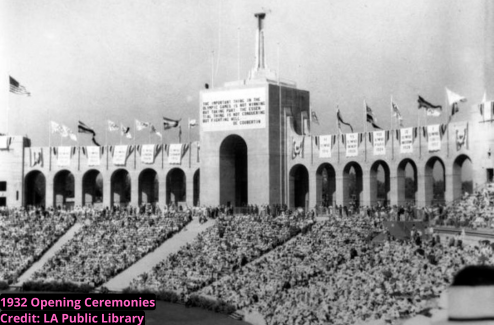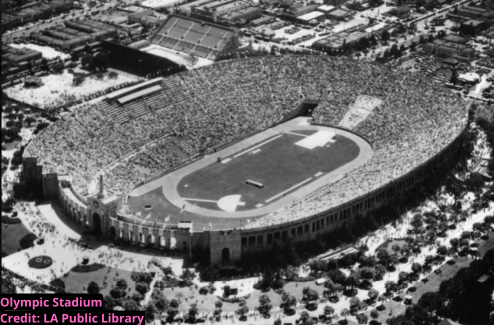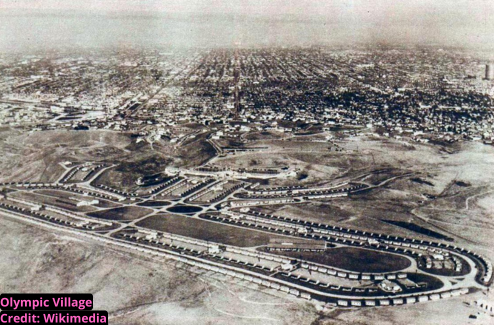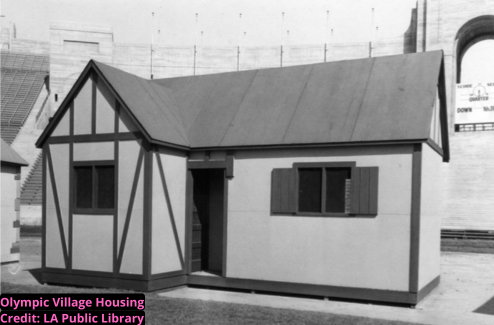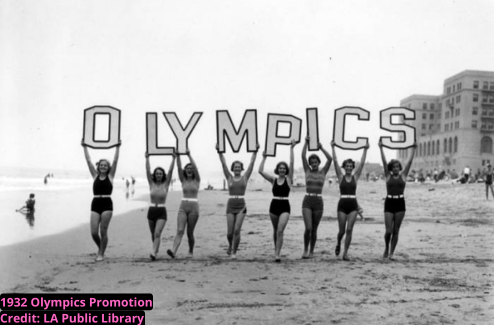After traveling to Rome in 1923, Garland finally secured the bid to host the 1932 Olympics. The organizers knew that they’d need more than just a place for athletes to compete, they would also require a place for them to live while they were in town. In fact, the high costs of travel and lodging (during the Great Depression, no less) led many countries to be hesitant to participate in the Games at all! But staunch in his commitment to bring the Games to LA, Garland made deals with hotels, railroads, and shipping lines to drastically cut the costs for visitors.
The organizers created the first-ever Olympic Village in an undeveloped area of Baldwin Hills, building temporary housing centers for all the male athletes and their staff to stay at a heavily discounted rate of only $2 a day. The male athletes stayed in one of the five hundred 24x10 foot bungalows, and their trainers, staff, and even chefs from their home countries were invited to stay with them. Some people at the time thought that putting the rivals together would lead to conflict, but newspapers mostly reported on the camaraderie and cross-cultural connections between athletes. With the help of the discounted housing, 37 countries ultimately agreed to participate in the games, and over 1,800 male athletes and staff stayed in the Olympic Village, enjoying the amphitheater, saunas, recreation rooms, and dining rooms created for their stay.
